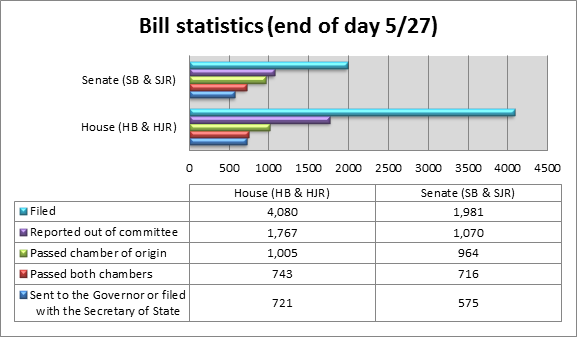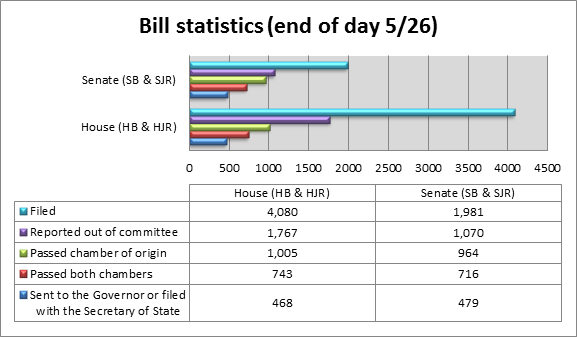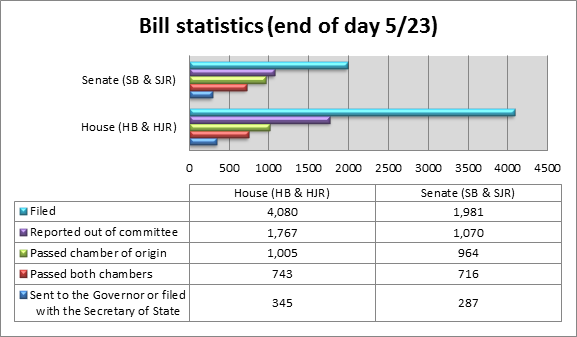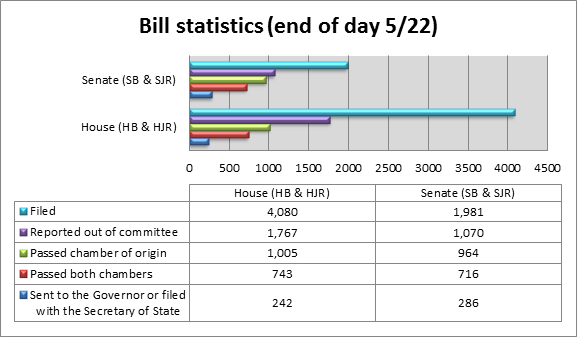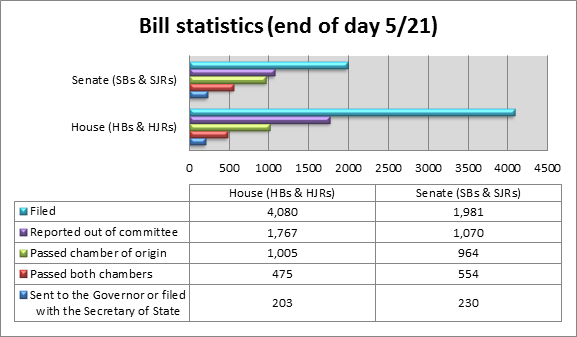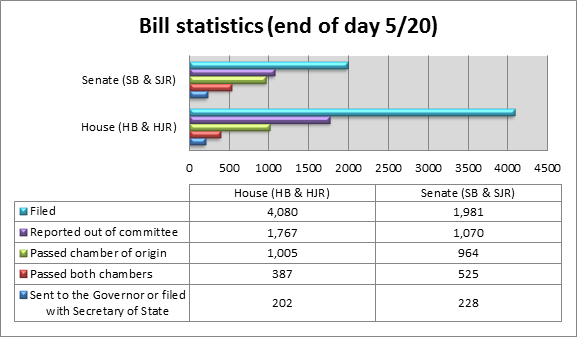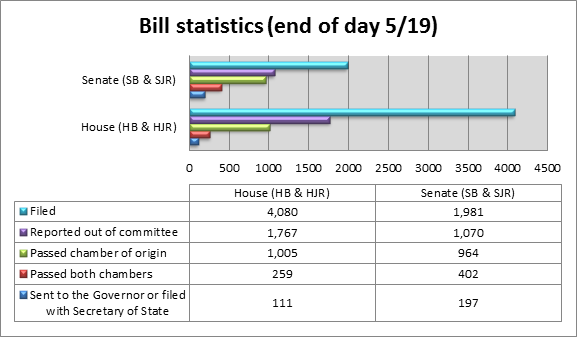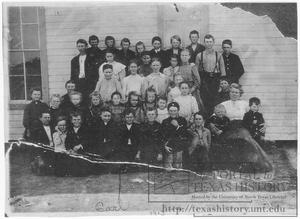 |
Schoolchildren at
Henrietta Public School in 1913.
Photo from the Portal to Texas History |
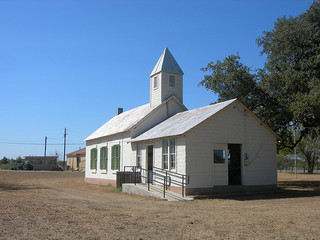 |
Lower Grape Creek Schoolhouse,
near Fredericksburg, was built in 1901.
Photo taken in 2011.
Photo by Flickr user jimmywayne |
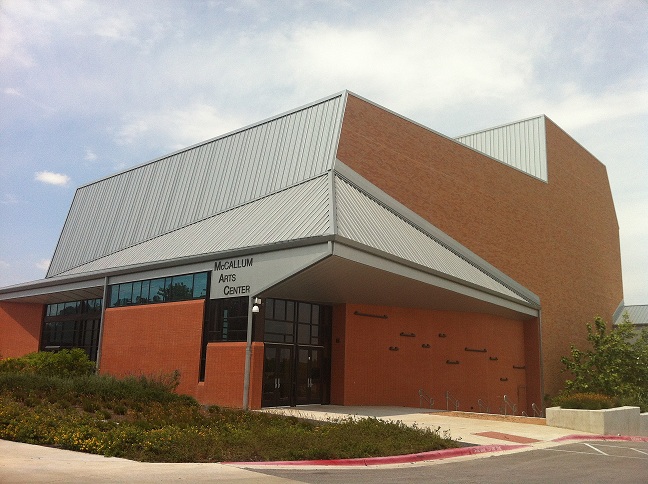 |
McCallum Arts Center, built in 2011,
at McCallum High School in Austin.
Photo by Addy Sonder |
The final entry in a series of posts about the 33rd Legislature, held 100 years ago. Read the previous posts on the general atmosphere, veterans, women’s rights, and drought.
One hundred years ago, the majority of Texas schoolchildren, like the majority of Texans, lived in rural areas (White, p. 18). The schools in these areas were mostly one-teacher schools (75%), and the school term lasted less than three months for more than 2,000 of the schools, with 46% average absentee rates (TEA, p. 53). Texas was one of just six states that did not have a compulsory attendance law (White, p. 20).
The school buildings themselves were often in terrible condition (TEA, p. 53), and it was this particular problem that lawmakers addressed during the 33rd regular session. Governor Colquitt emphasized the Democratic Party's position on school buildings during his state of the state address:
"Our platform promises for better educational facilities and a better system of public education is the most comprehensive utterance ever made by a political party in Texas on that subject."
The Legislature passed HB 24, which, for the first time, set out requirements for school building standards. Across the country, new standards regarding heating, ventilation, and lighting were being implemented (Baker, p. 6). HB 24, for example, states that "thirty cubic feet of fresh, warm air shall be supplied to each pupil in such a manner as not to place any pupil in a disagreeable draft." This measurement of thirty cubic feet had begun in Massachusetts and was, in 1913, becoming a nation-wide standard (Baker, p. 6).
The law also recommended that the windows be placed to the left of students (so that their arms and hands would not block the sunlight when writing, presumably, right-handed (Baker, p. 6)), and that decorative "fluting, turning, or carving" be kept to a minimum so as to not attract "dust and microbes."
School Building Standards Today
The Texas Administrative Code (19 TAC §61.1036) lays out guidelines for school facility construction. Notably, since 1913, the code now includes specifications for computer classrooms and acknowledges that regular classrooms may have technology in them (computers on carts, for example) that necessitates extra space. This webpage on the TEA’s website includes information on design standards, facilities funding, and other relevant information.
You can view current legislation about school facilities by searching with the subject “Education--Primary & Secondary--Facilities (I0241)” using the Texas Legislature Online or, for older bills, the library’s Legislative Archive System.
Texas Education Rankings, among U.S. States, in 1913 and Present
|
|
1913 Rank1
|
Present Rank
|
1913 Value2
|
Present Value
|
|
Annual expenditure per child
|
39
|
494
|
$7
|
$8,767
|
|
Average annual teacher salary
|
30
|
345
|
$415
|
$48,638
|
|
Length of school year
|
39
|
Among majority (59%) of states with 180 day year6
|
133 days3
(approx. average)
|
180 days
|
NB: See end of blog post for footnotes.
Learn More about Education in the Early 20th Century
-
See a map of all the ISDs created during the 1913 session.
-
Read this report on the history of school building standards.
-
Some schools of the early 1900s are still around today; come to the library and page through Early Texas Schools: A Photographic History to see these historical buildings.
-
A Study of Rural Schools in Texas, published in 1914 by the University of Texas, reviews the plight of rural school communities in Texas; this report is available as part of the library’s collection of higher education documents.
Table Footnotes
1 Source for 1913 rankings and dollar amounts for teacher salary and expenditure per child: White, 1914.
2 Dollar amounts are unadjusted for inflation.
3 United States, Bureau of Education, 1917.
4 and 5 NEA Research, 2012.
6 Bush, Ryan and Rose, 2011.
Sources
-
Baker, L. (2012). A History of School Design and its Indoor Environmental Standards, 1900 to Today. Washington, D.C.: National Clearinghouse for Educational Facilities. Available at http://www.ncef.org/pubs/greenschoolshistory.pdf
-
Bush, M., Ryan, M., & Rose, S. (2011, August). Number of Instructional Days/Hours in the School Year. Denver, Colo.: Education Commission of the States. Available at http://www.cga.ct.gov/ed/AchGap/Documents/2012/9505.pdf
-
NEA Research (2012). Rankings & Estimates: Rankings of the States 2012 and Estimates of School Statistics 2013. Washington, D.C.: National Education Association. Available at http://www.nea.org/assets/img/content/NEA_Rankings_And_Estimates-2013_(2).pdf
-
Texas Public Schools Sesquicentennial Handbook. Austin, Tex.: Texas Education Agency.
-
United States, Bureau of Education (1917). Report of the Commissioner of Education Made to the Secretary of the Interior for the Year Ended June 30 1916. Volume II. Washington, D.C.: Government Printing Office. Available at http://books.google.com/books?id=iGMWAAAAIAAJ
-
White, E.V. and Davis, E.E. (1914, October 10). “A Study of Rural Schools in Texas.” Bulletin of the University of Texas, No. 364 (Extension Series No. 62). Available at http://www.lrl.state.tx.us/scanned/SIRSI/A%20Study%20of%20Rural%20Schools%20in%20Texas.pdf
This entry was posted on May 21, 2013 at 2:30 PM and has received 4782 views.
Print this entry.

